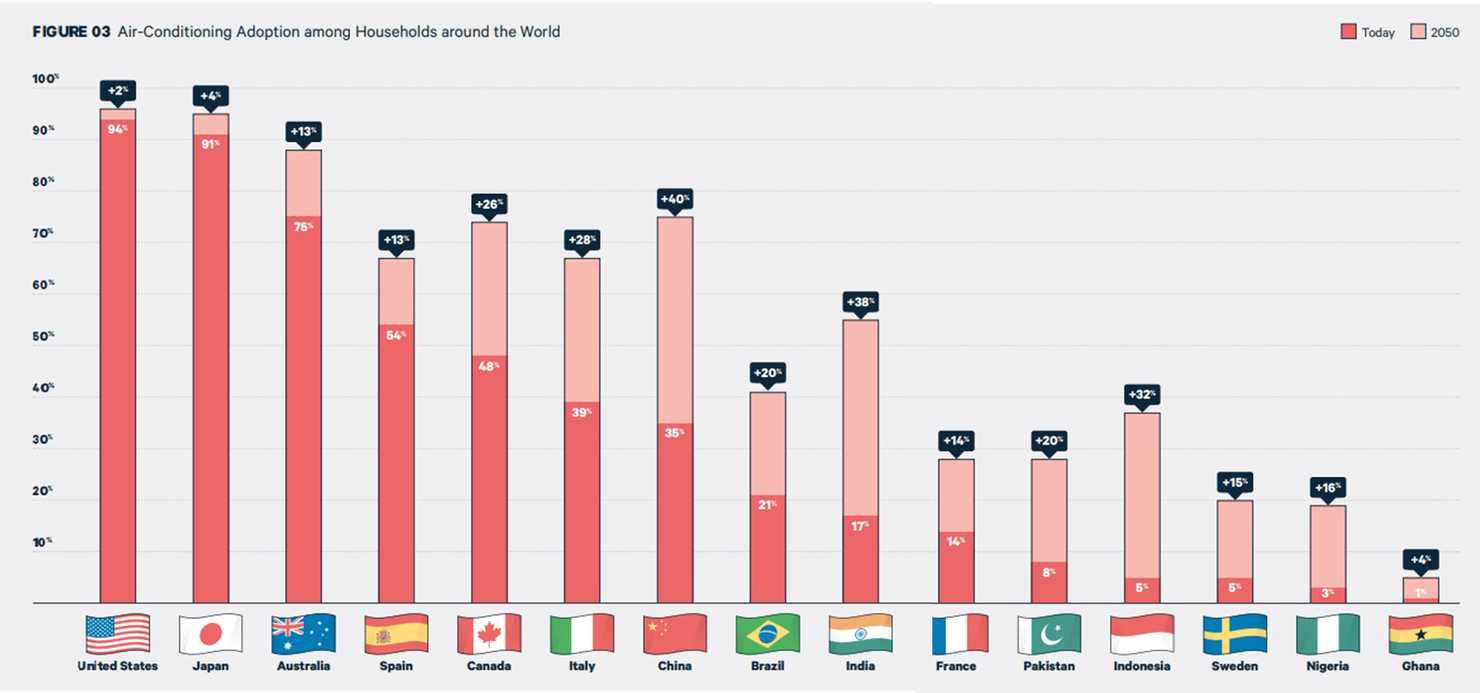Twice a month, we’re compiling the most relevant news stories from diverse sources online, connecting the latest environmental and energy economics research to global current events, real-time public discourse, and policy decisions. Keep reading, and feel free to send us your feedback.
Here are some questions we’re asking and addressing with our research chops this week:
What could the landscape of climate policy research look like after the upcoming US election?
Early voting for the 2024 US election has begun in several states, and election day (November 5) is less than a month away. Climate change has become a prominent issue on the campaign trail in the wake of Hurricane Helene, and vice presidential candidates JD Vance (R-OH) and Tim Walz (D-MN) both voiced support for ideas in the Inflation Reduction Act, the landmark climate law passed in 2022, during a debate last week. While the stakes for the climate in this election are high, “regardless of the election outcomes, some topics [including permitting reform and wildfire mitigation] will be ‘politically resilient,’ retain bipartisan interest, and continue to present opportunities for meaningful progress,” say scholars at Resources for the Future (RFF) in an article from the new issue of Resources magazine, which came out this week. The new issue of Resources also includes articles on a survey of public opinion about climate change, policy that blends climate and trade, and more. Check out the online edition of the magazine here.
As climate change intensifies, how reliable is the history of extreme weather as a guide for the likelihood of extreme weather events in the future?
President Joe Biden has deployed additional troops to North Carolina to support recovery efforts following Hurricane Helene. The category-four storm brought catastrophic levels of rain to mountain communities in Georgia, North Carolina, and Tennessee after making landfall in Florida on September 26. Many residents in the affected areas of North Carolina remained without running water as of early this week. The damage to southern Appalachia was unprecedented in recent history, say RFF scholars Margaret Walls and Yanjun (Penny) Liao, which means that predicting the frequency and intensity of future storms with precision will be difficult, if not impossible. In a new blog post, Walls and Liao point to historical data to show that Helene was an anomaly, which suggests the need for all communities to prepare proactively and build climate resilience. “In addition to building emergency preparedness, communities must find ways to build resilience to climate change,” they say. “In the coming years, placing more focus on policies that help these communities navigate competing needs, while strengthening their ability to survive unexpected catastrophes, will be imperative.”
Why did prices soar in an auction held by a major electric grid operator over the summer?
The Sierra Club and several other groups have filed a joint complaint with the US Federal Energy Regulatory Commission against PJM, a regional transmission organization that manages an electric grid in the Midwestern and Eastern United States. The groups allege that PJM is inflating the price paid annually to electricity generators to ensure that generators are available to deliver electricity in the future, which is known as capacity. The total cost that PJM will pay for capacity in its 2026/2027 delivery year jumped to $14.7 billion in its most recent capacity market auction, up from $2.2 billion in the previous auction. In a new blog post, RFF Senior Research Associate Molly Robertson discusses potential causes of this increase, such as the long wait time for new electricity generators in joining the grid, and potential solutions. “Ultimately, capacity market prices are sending an important signal in the market: More generation needs to be built,” says Robertson.

Evergreen Time Machine
RFF research from our archives offers historical background and possible solutions for the challenges in today’s news.
Expressways in the national network of superhighways seek floodplains as rights of way because the lands are level. But highway systems of such design are likely to attract still further occupancy of potential flood plains, interurban and urban, because of ‘the increased accessibility they will provide.’ Housing, trade, and industry are likely to follow them on to the flood plains.
This week: RFF Fellow Penny Liao reflects on the prescience of this quote for an article in the new issue of Resources magazine, which highlights articles from the 65-year publication history of Resources: “As communities invest in flood mitigation or other infrastructure projects, complementary land use policies are necessary to prevent inappropriate new construction in risky areas. These policies can include more resilient building codes and communication of residual flood risk.” Over the past 15 years, the state legislature in North Carolina has rejected rules that would have strengthened state building codes, including rules that would have made homes more resilient against flooding and prevented construction on steep hillsides, where landslides are likelier. Intense rainfall from Hurricane Helene caused flooding and landslides in western North Carolina, which damaged or destroyed a significant amount of housing in the region.

Expert Perspectives
Fracking in Pennsylvania Enters National Spotlight Following Mention in Election Debates
The candidates for a Senate seat in Pennsylvania sparred over fracking in a debate last week, a month after Vice President Kamala Harris and former President Donald Trump discussed fracking in Pennsylvania during their presidential debate in September. In recent years, Pennsylvania has become the second-largest producer of natural gas in the United States due to the introduction of fracking and horizontal-drilling technologies.
“As voters consider the future of fracking in Pennsylvania this November, it’s worth keeping at least two things in mind,” says RFF Fellow Daniel Raimi, who wrote this week about the political economy of fracking in Pennsylvania. “First, presidents can’t ban fracking. And second, Pennsylvania’s dramatic growth in natural gas production has had many impacts, both environmental and economic. But, unlike for some other states (e.g., New Mexico and North Dakota), the shale revolution has not transformed Pennsylvania into a state that is deeply dependent on oil and gas production for employment, economic output, nor government revenues.”
Electric School Buses Are Becoming More Common but Remain Pricey for School Districts
School is back in full swing, and the number of students who take an electric bus to school in the United States is increasing. Federal programs, including the Clean School Bus Program through the US Environmental Protection Agency, have allocated funding for school districts to procure these buses. Electric school buses can provide significant health benefits for students and local communities, given that electric vehicles do not produce tailpipe emissions that have been linked to respiratory illness and other health problems.
“The uptake of electric school buses across the country has been encouraging, but on the whole, these buses remain very expensive,” says RFF Fellow Beia Spiller, who has written about the price of electric school buses on the Common Resources blog. “School districts may not be able to afford them. Manufacturers are significantly marking up the price tag, because competition is thin, and the relatively small number of buses that are being made means that manufacturing costs remain large. Federal subsidies can help school districts pay this premium, but given the market conditions, these subsidies could be causing further increases in bus prices. If the government wants to use taxpayer dollars more efficiently while reducing prices, it could consider changing its approach to subsidies in this sector.”

Resources Roundup

White House Roundtable Highlights Benefit-Cost Analysis, with RFF President and CEO Billy Pizer
In 2023, the White House Office of Science and Technology Policy established a subcommittee to modernize benefit-cost analysis as performed by federal agencies. Next week Wednesday, October 16, this subcommittee will present a new report, discuss progress in the field of benefit-cost analysis, and highlight actions that can continue to advance benefit-cost analysis. Billy Pizer, the president and CEO of RFF, will take part in this discussion. Joining Pizer will be RFF University Fellow Amy Ando, other academic experts, and federal officials. RSVP to attend the webinar.
Greenhouse Gas Emissions in the Industrial Sector
The industrial sector, which includes manufacturers of iron, steel, cement, and other products, is an increasingly important area of focus for policymaking that aims to reduce US greenhouse gas emissions. Unlike the power sector, many processes in the industrial sector are proprietary, complex, and inaccessible to the public. On October 16, RFF will host a webinar that features new modeling and analysis about the industrial sector, along with discussion of alternative policies, energy pricing, and potential areas of emissions mitigation. RSVP to join the virtual discussion.
Surveying Views Held by Americans about Climate Change and Specific Climate Policies
Americans favor mandates over incentives as policy options to reduce greenhouse gas emissions, according to findings from a national survey of the views held by Americans about climate change. Since 1997, Stanford University Professor and RFF University Fellow Jon Krosnick has gauged American public opinion on climate change and climate policies through the ongoing Climate Insights project. Krosnick joined the latest episode of the Resources Radio podcast to discuss the results of this year’s report series: “Americans are clear that they’re actually willing to pay for policies that will reduce emissions. They’re not so enthusiastic about policies that might reduce emissions or might reduce emissions by unknown amounts,” says Krosnick. Check out the article based on this conversation in the new issue of Resources magazine.
Offshore Wind Farms Offer Significant Net Benefits
Offshore wind farms can provide renewable electricity and help reduce greenhouse gas emissions from the power sector. However, uncertainties remain for offshore wind in terms of its potential to replace emitting and nonemitting electricity generation, impact public health, and affect the overall cost of electricity. In a new study, RFF scholars Daniel Shawhan, Sally Robson, and Ethan Russell analyzed 32 planned or proposed offshore wind farms along the US Atlantic and Gulf Coasts. Modeling in the study indicates that the offshore wind farms offer significant net benefits. “The offshore wind farms’ estimated net benefits are positive, with an estimated benefit-to-cost ratio of 14 to 1,” say the authors. “Generation from the offshore wind farms disproportionately reduces natural gas– and coal-fueled generation, causing large emissions reductions.”
Understanding Local Attitudes Toward Large-Scale Energy Projects in Pennsylvania
While local support for energy projects is crucial, the preferences of residents and their elected officials for certain kinds of energy may not align. Holly Caggiano, an assistant professor at the University of British Columbia, and Sara Constantino, an assistant professor at Stanford University, discuss the preferences of local residents and elected officials for large-scale energy projects in Pennsylvania on a recent episode of Resources Radio. “[Local elected officials] seem to show this bias toward thinking that their constituents share their own preferences … They also underestimate the importance of job creation in building public support and job loss in creating public opposition to projects,” they say.

#ChartOfTheWeek

A larger version of this graphic is available in the high-resolution PDF of Resources magazine.
Deadly heat waves currently endanger the health of populations worldwide; due to their increasing frequency, heat waves are no longer “extreme” weather events. Air-conditioning has emerged as the predominant global strategy to cool buildings and mitigate the health effects of heat. This Chart of the Week, from the scientific and photographic project The Cooling Solution, featured in the new issue of Resources magazine, illustrates the expected growth in the adoption of air-conditioning in households around the world. While Western countries historically have used the most air-conditioning, populous countries in tropical regions are expected to acquire billions of air-conditioning units by midcentury to stay cool in an increasingly hot world. Architects and scientists are exploring alternative, low-carbon technologies that incorporate traditional architectural principles, such as shading and passive cooling. These strategies could help reduce reliance on conventional air-conditioning systems and the accompanying emissions.








